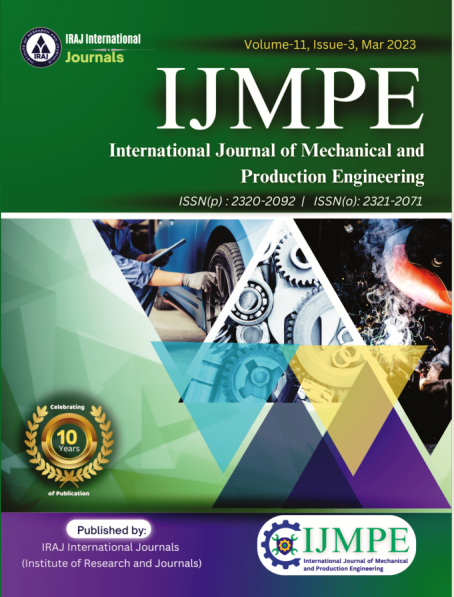Publish In |
International Journal of Mechanical and Production Engineering (IJMPE)-IJMPE |
 Journal Home Volume Issue |
||||||||
Issue |
Volume-7,Issue-11 ( Nov, 2019 ) | |||||||||
Paper Title |
Experimental Analysis and Work-Hardening Prediction in 2024-T3 Aluminum Alloy from Tensile Stress-Strain Curves | |||||||||
Author Name |
Manel Houria, Nedjoua Matougui, Brahim Mehdi, Nabil Kherrouba, Stephen Yue | |||||||||
Affilition |
Department of Material Science and Engineering, Higher School of Mining and Metallurgy, Sidi Amar Chaiba (Ex CEFOS) BP N° 233 RP Annaba, Algeria Faculty of Physics, University of Sciences and Technology HouariBoumediene, BP 32 El-Alia, 16111 Algiers, Algeria. Research Center in Industrial Technologies CRTI, P.O. Box 64, Cheraga, 16014, Algeria Department of Metallurgical Engineering, McGill University, 3450 University Street, Montreal, Canada H3A-2A7 | |||||||||
Pages |
28-33 | |||||||||
Abstract |
The main purpose of this study is to analyse and predict the strain hardening behaviour of a 2024-T3 aluminum alloy from experimental simple test, in several directions relative to the rolling direction. First, an experimental device of simple tensile tests and the studied material are described. Second, the experimental results in terms of hardening curves are presented on three loading directions and three strain levels using several hardening laws. The stress-strain relationship was well described by the Ludwick equation at low strain level while, the Voce law was valid for middle and high strain one. In order to further refine the modelling part of this work, the Kocks curve is well identified at the macroscopic scale by smoothing the experimental hardening curves at different strains and directions. A good analyse of the strain hardening ability affected by anisotropic behaviour is obtained using calculated and identified limit strains in which the instability points were deduced on σ–ε and θ–ε curves intersection. Keywords - Aluminum Alloy, Anisotropy, Tensile Test, Metal sheet, Strain Hardening Law, Kocks Curves, Plastic Instability. | |||||||||
| View Paper | ||||||||||